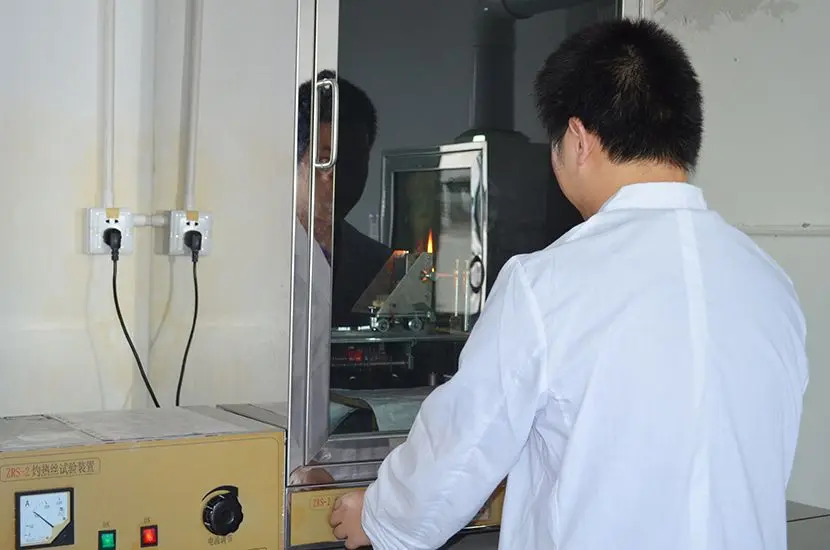
Canada Tent SOR/2024-217 Guidelines
On November 20, 2024, Canada's Ministry of Health unveiled SOR/2024-217, replacing SOR/2016-185 directly affecting tent manufacturers. This update not only revises fire resistance and labeling requirements for tents sold within Canada's borders; it also makes adjustments for toys and textiles regULated under this system. In other words, tents exported to Canada now must pass stricter fire tests while their labels must withstand wear-and-tear damage more readily than before. This represents an important shift in consumer product safety in Canada in recent years - tents imported here must undergo stricter fire tests while their labels must withstand wear-and tear wear-through tests before exportation takes effect - marking a substantial change within Canada's consumer product safety field since earlier years; tents exported abroad will have to undergo stricter fire tests while labels must endure wear-and tear more.

Which Tents Are CoveRED by the New Regulation?
The new regulations outline that tents must adhere to updated rules if they meet all six of the following conditions:
1. Portable Tent: Intended to be easily folded up and transported for camping or picnicking trips. 2. Protection Features: Offer protection against rain, wind and insects, including shelter from rain. 3. Materials: At least partially composed of fabric or soft materials such as polyester. 4. Has Roof Structure: Does not refer to canopy tents without roof structures.
5. At Least One Side Restricted: For example, tents equipped with zippered doors.
6. Not Covered By Building Codes: Large fixed tents do not fall within this classification.
Special Note: According to the Toys Regulation, children's play tents (such as cone-shaped tents or bed tents ) must carry additional warning labels.
Key Requirements of the New Regulation: Fire Resistance + Labelling
1. Fire Resistance testing: All materials must meet fire-retardant specifications to be safe for use in their intended environments.
Tent Fabric: When testing tent fabric, flame spread speed, burn time and melting/droplet conditions must all meet standards (can/CGSB-182.1-2030).
- Bottom Material: If a fabric fails to comply with fire standards, any bottom materials must also be subjected to testing to ensure they do not burn through quickly when exposed to flame.
2. Labeling Requirements: Clearly legible, accurate and long-term information must be displayed on labels for durability.
Basic Information: For every product name, model number and manufacturer listed herein to be correct, the respective information must also be.
Warning Label: The label must include at least 3mm font size of "Keep away from heat sources and open flames", along with a 6mm flame icon. Furthermore, this warning label must withstand washings, sun exposure and remain intact throughout its useful lifetime.
Bilingual labeling: Both French and English must be included on your labels.
Related Repercussions: Update of Toy and Textile Regulations
Children's Play Tents: Now covered under the Toys Regulation and required to meet ISO 8124-2 fire resistance tests with permanent warning labels attached, children's tents no longer subject to textile fire regulations, eliminating potential conflicts among regulations.
What Companies Need to Know: Effective Date and Transition Period
Effective November 20, 2025: Manufacturers and importers must abide by the new regulations.
On November 20, 2026: All sales and advertising activities must conform with these new rules.
Transition Period Benefits: Products compliant with SOR/2016-185 can still be sold until November 20, 2026 to allow time for inventory clearance and allow manufacturers to clear inventory as per regulation.
Advice for Businesses
1. Conduct Testing Early: Arrange to have fire resistance and labeling tests conducted by an ISO 17025 laboratory such as JJR Labs in China to obtain compliance reports.2. Perform Self-Check: Make sure all warning texts, icon sizes and bilingual labeling comply.
3. Focus On Children's Tents: Recognize them according to plaything standards rather than standard tent standards.
Tent manufacturers exporting to Canada should adjust their production processes early so as not to run into compliance issues once the transition period concludes.
Email:hello@jjrlab.com
Write your message here and send it to us
 How to Test IP68 Rating
How to Test IP68 Rating
 Differences Between FDA and LFGB for Food Contact
Differences Between FDA and LFGB for Food Contact
 Process and Precautions for Amazon CPC Certificate
Process and Precautions for Amazon CPC Certificate
 E-mark Certification Testing Service Laboratory
E-mark Certification Testing Service Laboratory
 Amazon ISO/IEC 17025 UL Testing Service Laboratory
Amazon ISO/IEC 17025 UL Testing Service Laboratory
 How to get CE Certification for Lighting Products?
How to get CE Certification for Lighting Products?
 CE Certification Standards & Process for Elect
CE Certification Standards & Process for Elect
 Japan METI Registration & Japanese Agent Servi
Japan METI Registration & Japanese Agent Servi
Leave us a message
24-hour online customer service at any time to respond, so that you worry!




